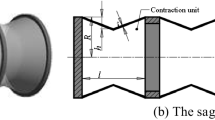Abstract
Implanted stimulators have been used at a number of sites within the body, which include (apart from the heart) the bladder, rectum and urethra. A small radio-frequency generator is commonly used externally, coupling to an implanted pick-up coil and rectifying system. The design of both the electronic circuitry and the electrode geometry is dependent on the physiology and anatomy of the tissues. An elementary account of the relevant physiology is therefore given, leading to an examination of the mechanism of excitation. A number of deductions are made affecting waveform, power pulse length, and electrode configuration. Certain experimental apparatus is described at the end of the paper.
Sommaire
Des stimulateurs implantés ont été placés en un très grand nombre d'endroits du corps humain comprenant (en dehors du coeur) la vessie, le rectum et l'urètre. Un petit générateur radio-fréquence est utilisé couramment, placé, à l'extérieur, couplé à une bobine de recueil implantée et à un système redresseur. La réalisation des circuits électroniques et la géométrie des électrodes dépendent toutes deux de la physiologie et de l'anatomie des tissus. Un exposé élementaire, se rapportant à la physiologie, est cependant donné, conduisant à l'étude du mécanisme de l'excitation. On en tire un grand nombre de déductions qui affectent la forme de l'onde, sa puissance, la durée des impulsions et la configuration des électrodes. On décrit à la fin de cet article un appareil d'expérimentation.
Zusammenfassung
Implantierte Stimulatoren werden an verschiedenen Stellen des Körpers angewandt, außer am Herzen an Gallenblase, Rektum und Urethra. Im allgemeinen wird äußerlich ein kleiner Radiofrequenzgenerator verwendet, der an ein implantiertes Empfangsund Umwandlungssystem gekoppelt ist. Die Anordnung der elektronischen Schaltungen und die Elektrodengeometrie hängen von der Physiologie und der Anatomie der einzelnen Gewebe ab. Aus diesem Grund wird eine Einführung in die betreffenden Grundlagen der Physiologie gegeben, welche zu einer Betrachtung des Erregungsmechanismus führt. Eine Reihe von Folgerungen werden gemacht, die Wellenform, Stromstärke, Impulslänge und Elektrodenkonfiguration betreffen. Am Schluß der Arbeit werden einige Experimentalapparate beschrieben.
Similar content being viewed by others
Abbreviations
- λ:
-
the characteristic length of the nerve (the length such that the radial resistance of that length of membrane equals the longitudinal resistance of the inner core)
- A :
-
the cross-sectional area of the inner core
- ρ:
-
the resistivity of the inner core
- v :
-
the potential change in the inner core atx, caused by the stimulus
- i :
-
the current flowing through the inner core
- r :
-
the radius of the nerve
- R :
-
the resistance of 1 cm2 of membrane
- x :
-
a distance along the nerve
- V :
-
the potential of the external medium atx
References
Boyce, W. H., Latham, J. E. andHunt, L. D. (1963) Research related to the development of an artificial electrical stimulator for the paralysed human bladder: a review.Trans Am. Ass. genito-urin. Surg.,55, 81–91.
Bradley, W. E., Wittmers, L. E. andShelley, N. C. (1963) An experimental study of the treatment of the neurogenic bladder.
Burnstock, G. andHolman, Mollie E. (1961) The transmission of excitation from autonomic nerve to smooth muscle.J. Physiol., Lond.,155, 115–133.
Eccles, J. C. (1959)Handbook of Physiology, Ed.John Field. Vol. 1, Section 1.
Hodgkin, A. L. andHuxley, A. F. (1952) A quantitative description of membrane current and its application to conduction and excitation in nerve.J. Physiol., Lond.,117, 500–544.
Hodgkin, A. L. andRushton, W. A. H. (1946) The electrical constants of crustacean nerve fibre.Proc. Roy. Soc., B.133, No. 873, 444–479.
Hodgkin, A. L. (1947) The membrane resistance of a non-medullated nerve fibre.J. Physiol., Lond.,106, 305–318.
Rushton, W. A. H. (1927) The effect upon the threshold for nervous excitation of the length of nerve exposed, and the angle between current and nerve.J. Physiol., Lond.,63, 357–377.
Winton, F. R. andBayliss, L. E. (1962)Human Physiology. Churchill, London.
Author information
Authors and Affiliations
Rights and permissions
About this article
Cite this article
Lale, P.G. Muscular contraction by implanted stimulators. Med. & biol. Engng. 4, 319–331 (1966). https://doi.org/10.1007/BF02476150
Received:
Accepted:
Issue Date:
DOI: https://doi.org/10.1007/BF02476150




